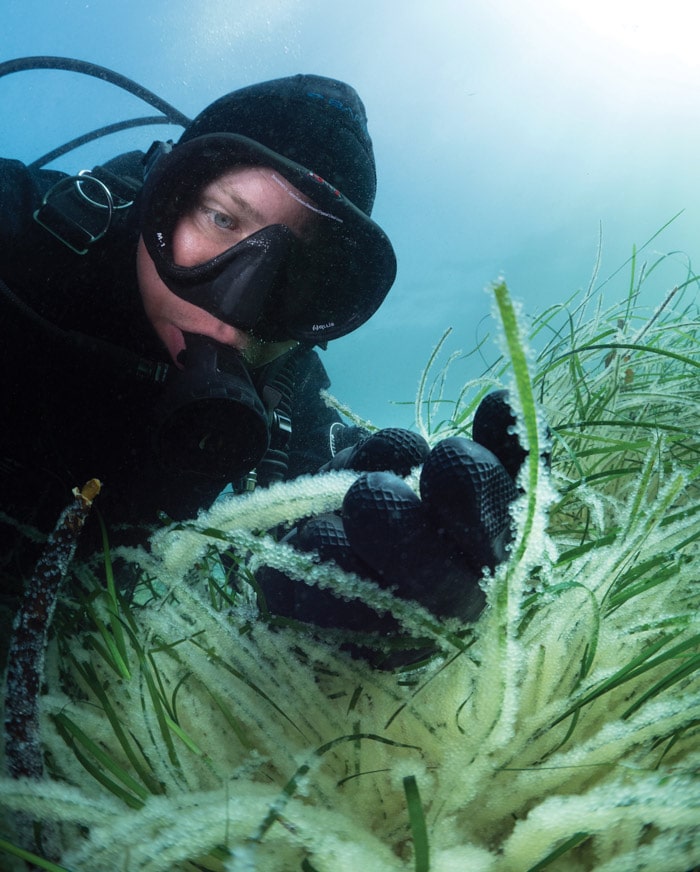Pacific Herring
Words and Photo By Maxwel Hohn

One of the most abundant fishes in BC’s coastal waters, Pacific herring are a keystone species for the marine food web and support a diversity of marine predators. Each spring (peaking in March), millions of Pacific herring migrate from the offshore waters to more sheltered nearshore bays and estuaries to spawn. Male herring release a milt, which colours the waters a chalky white, sometimes for many miles/kilometres of coastline. In this turquoise opaque water, female herring lay eggs (up to 20,000 each) upon the intertidal vegetation, including eelgrass and kelp. These dense aggregations of spawning herring and their deposited eggs attracts tremendous numbers of predators and scavengers. Tens of thousands of marine birds, hundreds of sea lions, seals, and dozens of humpback and grey whales actively forage for weeks.
Before 1988 all herring spawn surveys conducted by Fisheries and Oceans Canada were done by beach walking, raking, and viewing vegetation beds from the surface aboard small boats. This method does not properly assess spawns in the deep or murky water. In 1988 Occupational Scuba teams were assembled to survey all major spawn beds. The two main tools used for surveying spawn beds are a lead line and quadrat. Once the lead line is set, the divers swim down the buoy line and along the transect until they reach the edge of the spawn bed. At this point, they must calculate the spacing required between stations to sample the transact properly. At each station the divers note: depth, time, substrate, algae, percentage of egg cover, and percentage of egg layers.
The data collected by these surveys is more accurate and it is used to estimate the number of fish that returned to spawn. By itself this data cannot tell us anything about survival or returns in the years to come, but when combined with catch and test fishery sample data it becomes a critical link in assessing the size and strength of the herring stocks.
Leave a Comment







